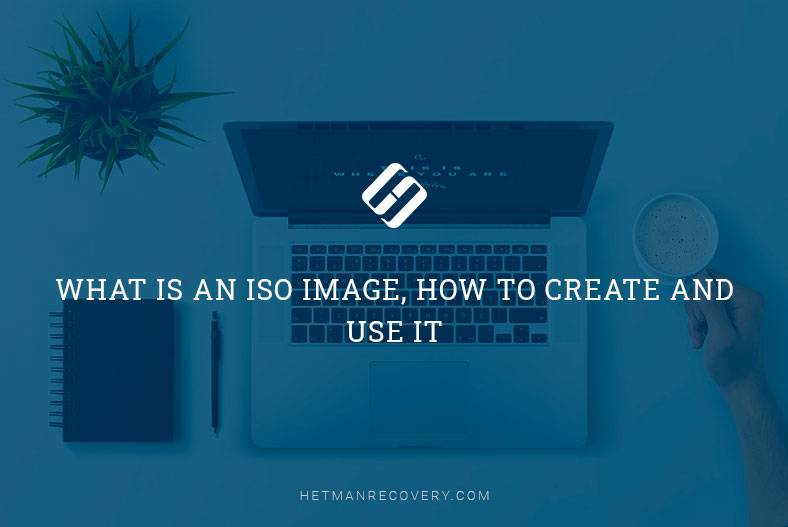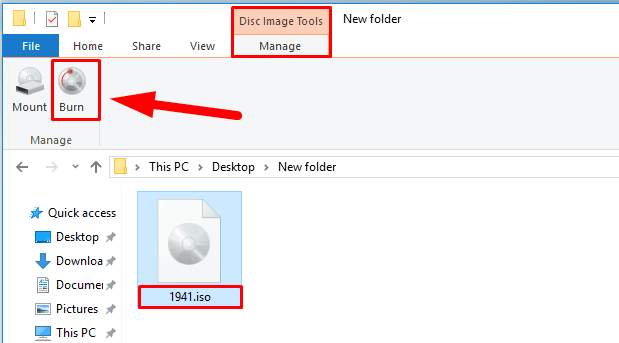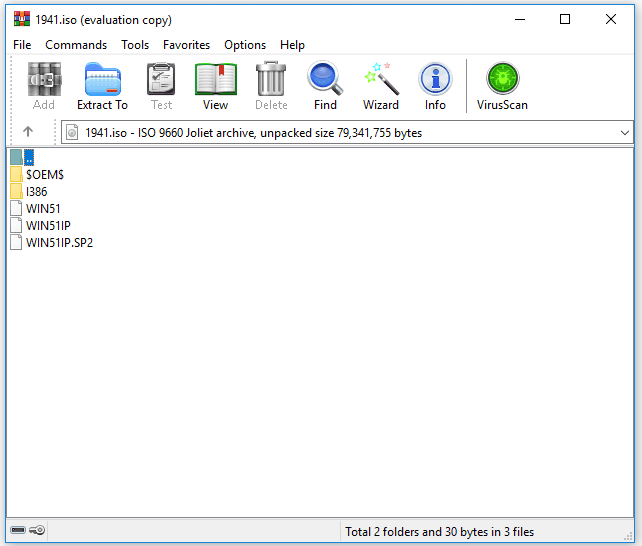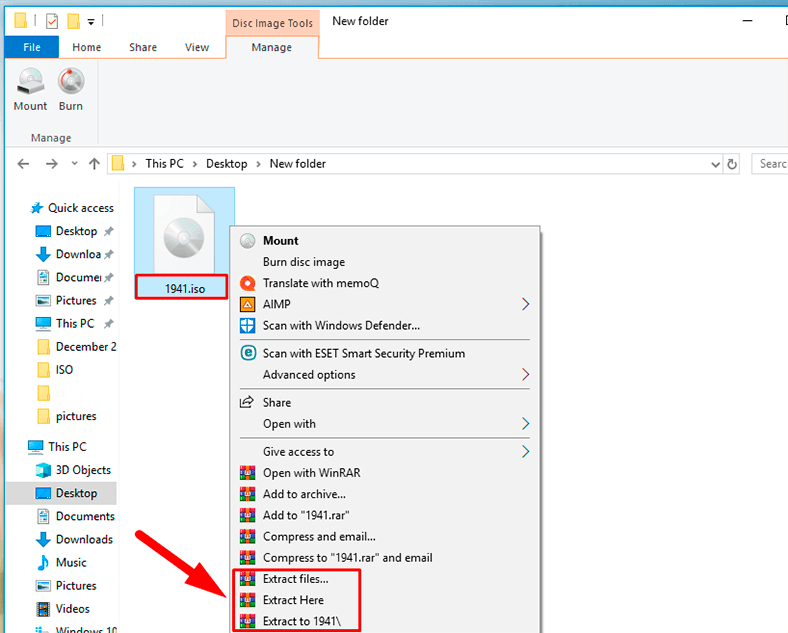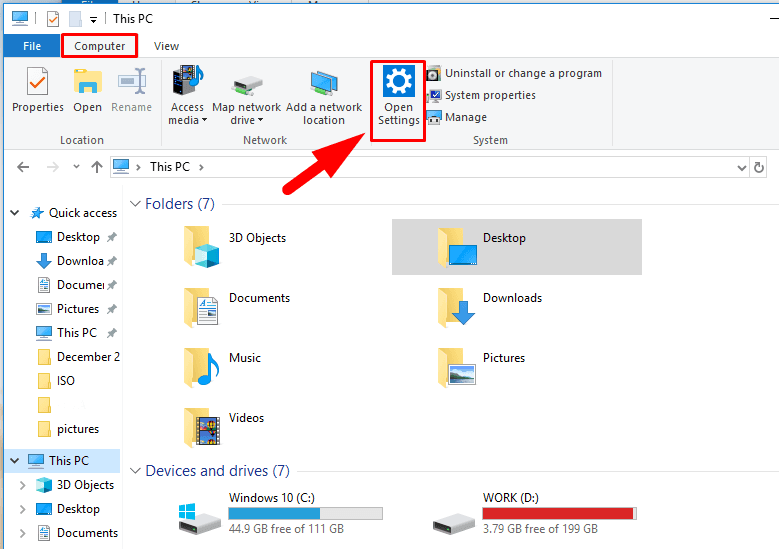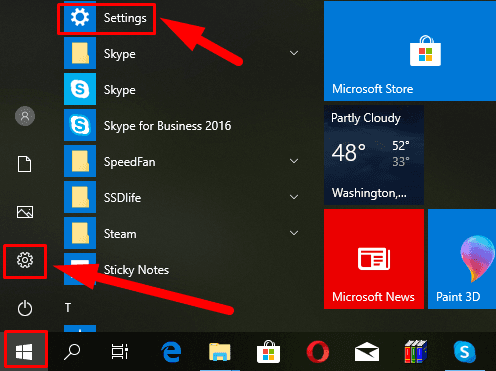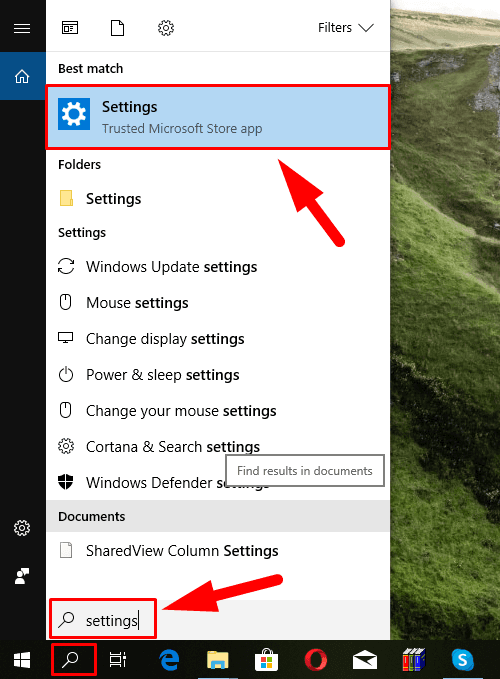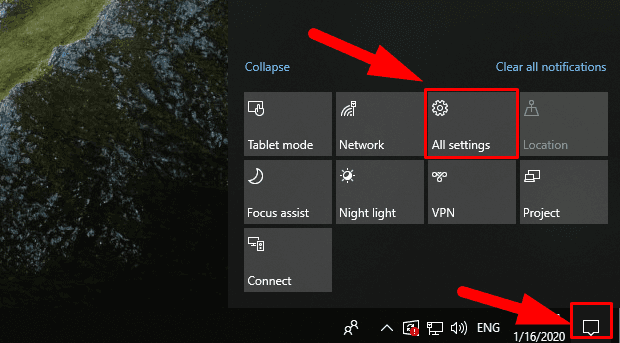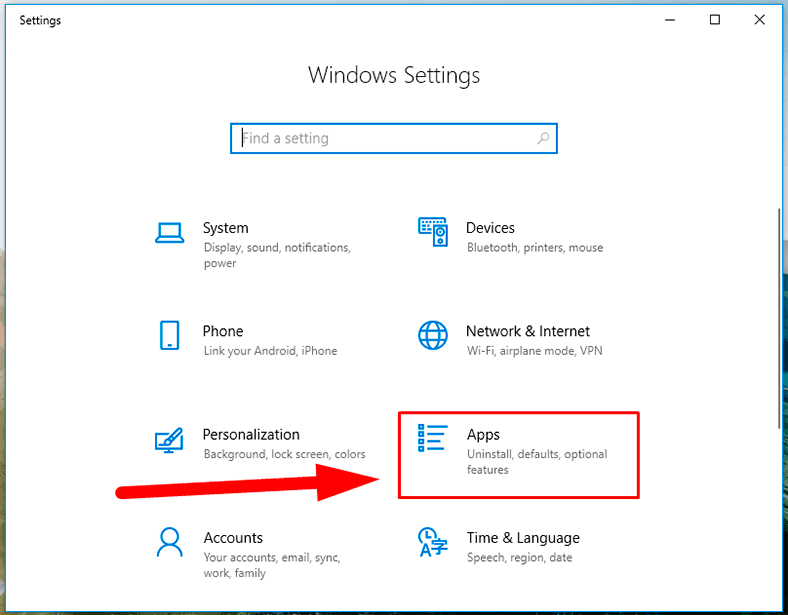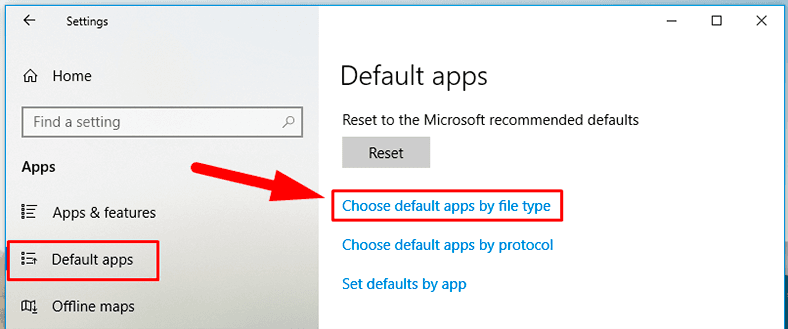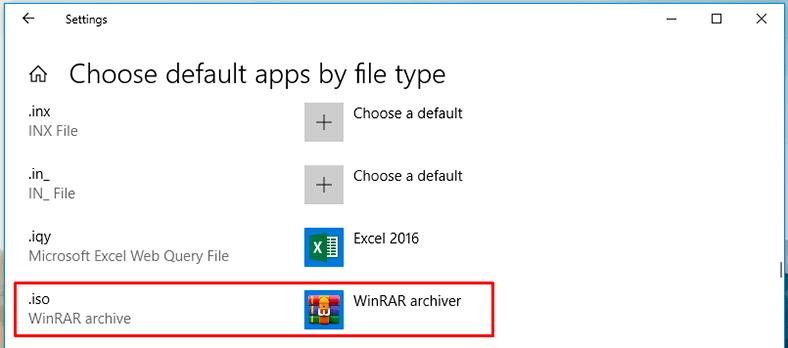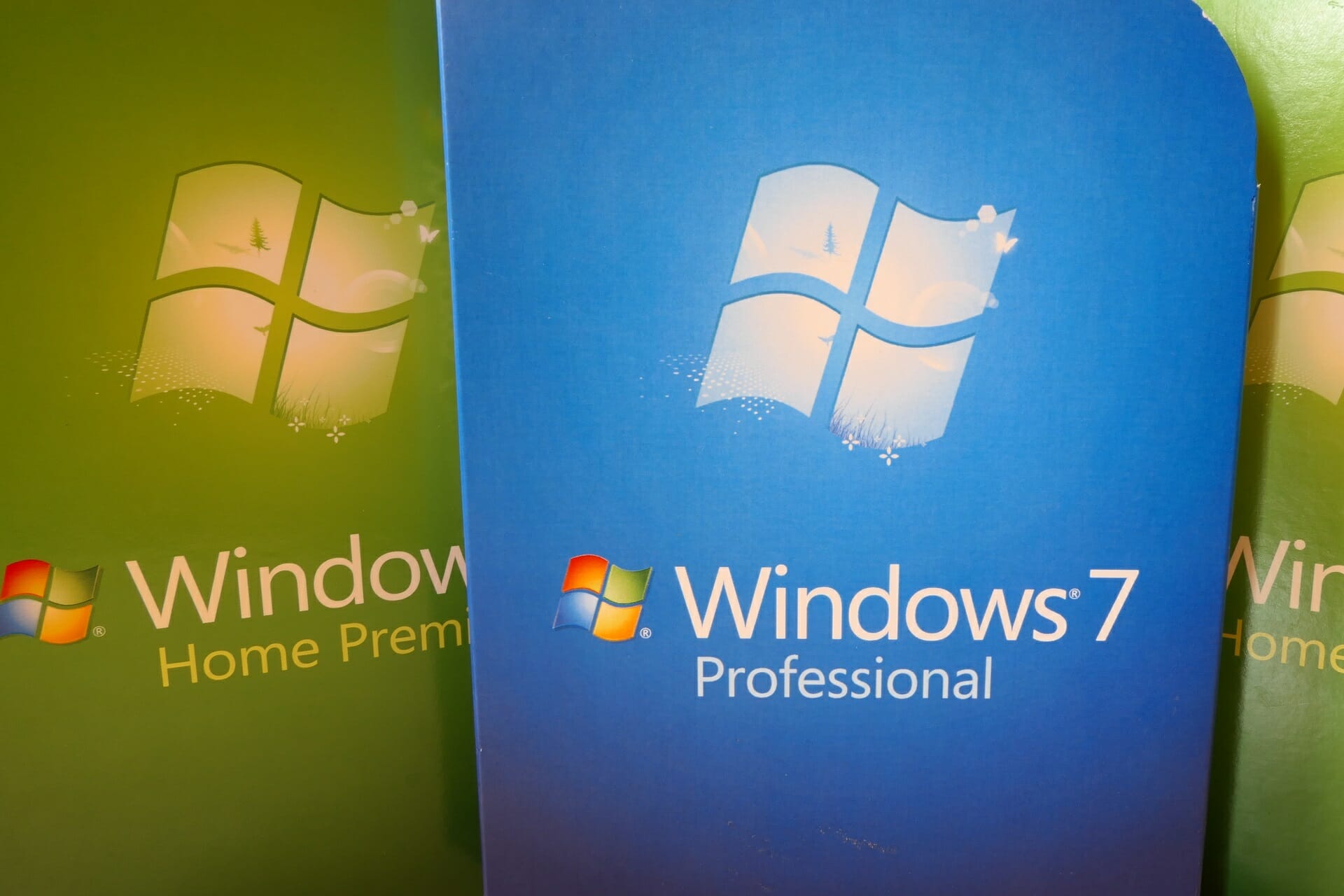- What Is an ISO Image, How to Create and Use It
- What is an ISO image?
- How to mount an ISO image?
- How to burn an ISO image to a disk?
- How to extract data from an ISO image?
- How to make your own ISO file from an optical disk?
- 6 best Windows 7 ISO mounting software solutions
- What are the best Windows 7 ISO mounting tools for your PC?
- WinZip (recommended)
- WinZip
- PowerISO
- PowerISO
- WinCDEmu
- Virtual CloneDrive
- DAEMON Tools Lite
- Magic ISO
What Is an ISO Image, How to Create and Use It
Read this article to find out how ISO images are used and why we need them. How to create an ISO image from an optical disk, mount it as a visual disk in your computer, and extract data from such ISO if necessary.
Most computer software is supplied in a digital format – on an optical disk or in other forms. Quite often, there is a situation when a copy of a disk should be saved, and this is when an ISO image comes on stage.
An ISO file (often referred to as an ISO image) is an archived file containing an accurate copy (or image) of data found on an optical disk, for example, a CD or a DVD. This file format is often used to back up optical disks or arrange large sets of files for further writing to an optical disk.
What is an ISO image?
The abbreviation ISO comes from the name of the file system used for optical media – usually, it is ISO 9660. Think of an ISO image as a complete copy of all data stored on a physical optical disk such as a CD, DVD or Blu-ray disk, including its own file system. It is, in fact, a sector by sector copy of the physical disk, without any additional compression applied. The idea behind an ISO image is that you can archive an accurate digital copy of an optical disk and then use this image to burn a new disk which will be an exact copy of the original optical disk. Most operating systems (as well as many utilities – auxiliary computer programs designed to perform specialized tasks that ensure proper work of the computer’s hardware or operating system) also allow mounting an ISO image as a virtual disk. In this case, all your applications treat it as if it were a real optical disk inserted into the optical disk drive of your computer.
While many people look to the ISO format to back up optical disks, globally ISO images are mostly used for distribution of large programs and operating systems because it allows to store all files in one big file that can be downloaded easily. Once you have that big file, you can decide if you want to mount it for further use or burn that image to an optical disk.
Most operating systems available for download, including Windows and various Linux distributions are provided in the form of ISO images. It is very convenient when you are planning to download the latest version of Ubuntu to install on your computer or looking for a way to install a game from an old disk to your laptop, when the actual physical disk is missing.
How to mount an ISO image?
The idea of installing something from an ISO image suggests that you will mount the disk image you have onto the virtual optical drive. All your applications will treat the mounted image as if it were a physical optical disk inserted into the optical disk drive of your computer.
Latest versions of the most popular operating system – Windows 8, 8.1 and 10 – enable you to mount an ISO image without having to look for additional third-party software. Check this feature out by opening the folder where the ISO disk image file is stored, and right-clicking on it to display the context menu. From the list of available actions, select Mount.
Alternatively, open the folder with the Windows File Explorer, left-click on the required ISO image to select it, look up at the available options in the tab Manage / Disc Image Tools and click Mount.
If your computer is running Windows 7 operating system (or an earlier version of Windows), you will have to install an additional third-party utility: for example, a free and easy-to-use tool WinCDEmu.
How to burn an ISO image to a disk?
The option to burn an ISO image to a physical disk comes in handy if you want to create a bootable drive for installing software or operating system to another computer. It is especially useful when you are installing an operating system (or creating a special system disk) and this disk will be required for booting. Also, you can use this option to create a physical backup copy of a disk, or if you need to share a copy of the disk with someone else.
To make life easier for us ordinary users, modern operating systems like Windows 7, 8 and 10 feature an integrated function of burning ISO images to optical disks. All you need to burn an ISO image is to insert an empty optical disk into the optical disk drive of your computer, and then use either of the following options. Just like in the example with mounting an ISO image, you need to start by opening the folder containing the ISO image with the Windows File Explorer. Now right-click on it and open a pop-up menu, then select Burn disc image.
Alternatively, select the ISO image file, look up to find the tab Manage / Disc Image Tools and click Burn.
Note: If your computer doesn’t have a device able to burn data to optical disk, this button is not displayed. Besides, if an application for compressing files is installed on your computer (for example, 7-Zip) and it is associated with the ISO file extension, this button won’t be available either. You can learn more about it in the next part of the article.
In MacOS operating system, the function of burning an ISO image to an optical disk works by the same principle as in Windows, so there is no need to describe it in detail.
How to extract data from an ISO image?
If you don’t want to mount an ISO image or burn it to an optical disk, but you still need to access the files inside it, you can extract the image contents to your computer. To do it, use a third-party app like WinRAR or 7-Zip. We will show you how to extract data from an ISO image through the example of WinRAR, but you can use any similar application you are comfortable with.
If you included .iso into the list of associated file extensions for WinRAR when installing the application, then just double-click on the corresponding ISO image to open it and view its contents. Depending on the size of the ISO file, opening it might take some time, so be patient.
You can copy any files from the ISO image to another folder by just dragging them.
If necessary, you can also extract all the contents of the ISO image into a folder. In the File Explorer, right-click on the ISO image and open a pop-up menu. From the list of available actions, choose one of the three options, each of them having its own method of extracting files. The option Extract files… lets you choose where exactly you want to place the extracted files, the option Extract here puts the files into the same directory where the ISO image file is located, and the option Extract to folder name creates a new folder in the directory where the ISO image is located, and gives it the name of this ISO file.
Other file compression tools such as 7-Zip are based on the same principle and offer similar options.
However, there’s an important peculiarity to be noted. If you install a file compression tool such as 7-Zip or WinRar, and let this tool become associated with ISO files, you will never see the integrated options to work with ISO images in the Windows File Explorer. That is why it is better to have the option to manage ISO images in the File Explorer; after all, you can always right-click on a file and access application options to extract data from an ISO image any time you need it.
If you have already installed one of such tools and it is associated with image files, you can easily change the settings to have the ISO file extension associated with the Windows File Explorer. Do it with the help of the integrated application, Settings. It provides you with access to all basic settings of your operating system, And Windows 10 developers intend to replace the Control Panel app with the Settings app to make using a computer more convenient for ordinary users. This is why we are going to show you a few possible ways of opening it, so you can choose the one you like to work with this tool.
Open the Windows File Explorer and switch to This PC. Select the tab Computer above. Find the System section on the right and click on the blue button with a white gearwheel inside it (Open Settings).
Click on the Start button in the lower left corner of your desktop, on the Taskbar, and open the main Windows menu. Look to the left to find a button with a gearwheel on it and click on it to start the app. Alternatively, scroll down the list of all installed applications and find the section Settings.
Click the Search button, shaped as a magnifying glass and located on the Taskbar next to the Start button, and open the search panel. Type Settings into the search field. The system will analyze your query and show the link in the Best match section for you to click on it.
Click on the Windows Action Center icon, located in the lower right corner of the desktop on the Taskbar. Look at the bottom of the pop-up side panel to find the group of quick access buttons. Click on All settings to open the app you are looking for.
The easiest and the quickest way to start the Settings app is to press the key shortcut Windows + I and open the app directly.
In the main window, navigate to Apps. In the new window, look to the left and select Default apps. On the right, scroll down until you see Choose default apps by file type and click on it.
The new window will show you a long list of file extensions. Use the scroll bar to find the .iso extension. Opposite the icon, look to the right and click any app that is currently associated with the .iso file extension. In the pop-up menu, select Windows File Explorer.
How to make your own ISO file from an optical disk?
Creating an ISO file from a disk lets you have a digital backup copy of any physical disk. After that, you can use the new ISO files for installation of software on other computers which don’t have an optical disk drive. In the future, you will be able to create additional copies of this ISO file without having to use the original (physical) disk, And, of course, share this ISO image with other people.
While MacOS and Linux operating systems come supplied with pre-installed tools to create an ISO image of a physical disk, the Windows family of operating systems lack this feature.
Instead, you will have to use third-party apps to create an ISO file in a Windows operating system. On the Internet, you can find lots of apps to create an ISO image and choose the one that suits you best. All tools of the kind have the standard set of functions, and feature some extra options to stand out against the competition. Depending on your needs, you can select an application that you think is the best choice for further use.
The Windows operating system lets you perform a basic set of operations with ISO files without having to install additional tools. You can always mount, burn or copy an ISO image on your computer, quickly, easily, and free of charge.
Author: Vladimir Artiukh, Technical Writer
Vladimir Artiukh is a technical writer for Hetman Software, as well as the voice and face of their English-speaking YouTube channel, Hetman Software: Data Recovery for Windows. He handles tutorials, how-tos, and detailed reviews on how the company’s tools work with all kinds of data storage devices. Read more
6 best Windows 7 ISO mounting software solutions
- If you’re looking for the best ISO mounting software to use on your Windows 7 computer.
- Take a look at some of the top tools we’ve included on our list and make your pick.
- Still a fan of Windows 7? Then go and visit our dedicated Windows 7 section.
- For more useful product lists for every occasion visit our Software Hub.
- Marvel
- Starwars
- National Geographic
- Pixar
If you’re looking for the best Windows 7 ISO mounting software to use on your computer, take a peek at some of the top tools.
Mounting software, also known as disk image tools, let you turn discs and drives into virtual images so you can easily store and/or modify them from your computer’s storage.
An ISO file is a disk image file derived from an optical disc that contains the same contents from the disc, including its file system.
ISO files are characterized by their .iso extension, so if you have or receive any such files for users who are not on Windows 8 or 10 – because these two already automatically mount ISO files – then you need the best Windows 7 ISO mounting software to execute the task.
Mounting such files is one of the best things to have happened after CD and DVD drives because the latter was becoming cumbersome to move around with, plus added to the clutter around us.
Today, you don’t have to struggle with carrying around volumes of files in several discs on which you’ll burn your files to. Simply get mounting software or disk image tools, and you’re all set.
Here are our top picks for the best Windows 7 ISO mounting software you can use today.
What are the best Windows 7 ISO mounting tools for your PC?
WinZip (recommended)
Topping off our list is a software utility that is a top choice when it comes to archiving, extracting, or encrypting data, and it is called WinZip.
That being said, WinZip is perfectly compatible with Windows 7, even if it is an outdated OS. It supports all major archive file formats, as well as image files like ISO or BIN.
What makes WinZip ideal for handling ISO files is just how easy it is to use. Simply install it, then right-click the ISO file, and select the Extract here or Extract options.
Once you’ve done that, whatever was on the ISO files will be up for grabs in the location of your choosing.
Here are some of the perks of using WinZip:
- Require no prior knowledge of using software
- Universal archiver and file extractor
- Can handle image file formats
- Low system impact
- Easy-to-use
WinZip
PowerISO
As its name suggests, PowerISO can and will mount ISO files onto your virtual drives and it supports Windows 7 too.
The good thing about this mounting software is you can create bootable USB flash drives with it, plus you can use it to rip audios from your CD/DVD discs and convert them to mp3 files for easier storage and listening.
It also supports other image file formats besides ISO.
PowerISO
WinCDEmu
This is a free, open source mounting software that lets you mount ISO files in Windows 7 through Windows Explorer.
All you do is click on the disc images, or if you have an ISO image you intend to use, then WinCDEmu is your friend.
It is a one-click ISO mounting tool that runs on both 32 and 64 bit versions of Windows 7. What’s more, you can mount as many virtual drives as you so wish with this tool.
It also doesn’t take up so much time during installation as it is smaller than 1MB, so you can use it to mount whatever files you want like movies, games, music, and any other files you may have.
The beauty is that unlike the CD/DVD discs, you get more storage with a virtual drive, plus it opens up faster from your computer than a disc.
⇒ Download WinCDEmu
Virtual CloneDrive
As one of the best Windows 7 ISO mounting software in the market, this tool mimics an optical disc only that it exists virtually in your computer.
You can mount ISO files to a virtual drive and still use it the way you would a CD/DVD drive.
It is so simple to use, plus it comes free of charge and supports Windows 7 operating system.
The only flaw is the limited amount of virtual drives you can get with this tool at just 8 drives, otherwise, it is one of the most popularly used mounting software.
DAEMON Tools Lite
One of the most frequently used applications in the market. DAEMON Tools Lite works on Windows 7 and any other Windows platform, for that matter.
It brings all the usual jazz to the table, with multi-drive virtual simulation and a simple-to-use interface.
As the name itself suggests, this is a lightweight application and it even has a portable version that doesn’t require installation in order for you to mount ISO files.
Even though the interface is a bit outdated in comparison to some other entries on this list, you’ll figure it out in a matter of minutes.
You can either set a permanent virtual volume drive or add it only when needed. Not to mention a large variety of supported formats and fast access from the system tray.
Magic ISO
This mounting software works magic on ISO files as it mounts multiple images simultaneously – such a time saver right?
However, you only get up to 15 drives with this tool, which is pretty much better than Virtual CloneDrive, but this one doesn’t have a user-friendly interface like the other tools.
This tool also lets you extract images from optical discs, convert different formats, plus you get to work with your disk image the same way you would have with an active CD/DVD drive.
The best part is you can use it with Windows 7 as it works with the Windows Explorer so you can drag and drop your files and mount with zero hassles.
⇒ Download Magic Disc
Which of these best Windows 7 ISO mounting software sounds like a plan for you? Let us know in the comments section below, and share your experience if you’ve used any of them.
UPDATE: Microsoft made the official Windows 7 ISO files available for download. This means that you can go to Microsoft’s official website and copy the ISO files to an external device. You can then use the respective files to install Windows 7 on your computer.
Here are the official download links:
⇒ Download Windows 7 ISO from Microsoft
Important note: Microsoft officially ended Windows 7 support. If you’re planning to upgrade to Windows 10, make sure to check out our wide collection of guides on how to make the transition as smooth as possible.
